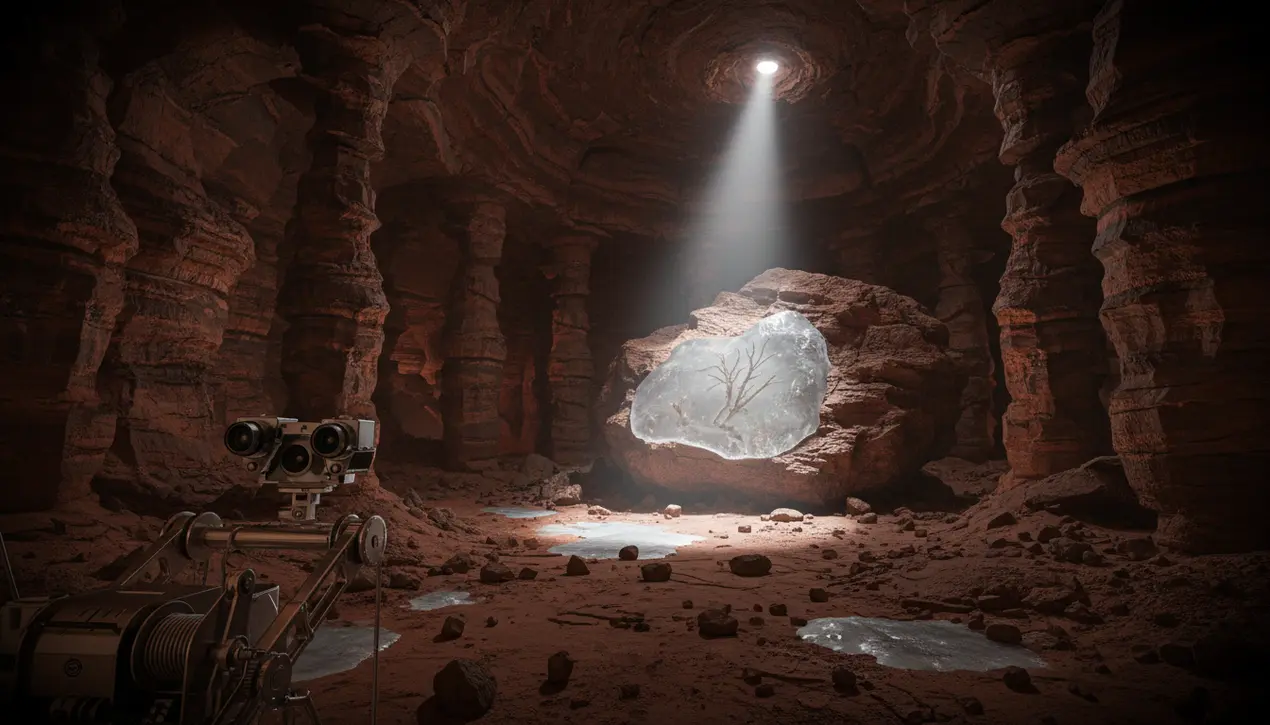
Sciencespace & astronomyMoon and Mars Exploration
Mars Caves May Hold Clues of Ancient Water and Life
TH
Thomas Green
2 hours ago7 min read4 comments
The stark, red plains of Mars have long whispered secrets of a wetter past, and a groundbreaking study led by Shenzhen University has just amplified that whisper into a resonant call. By focusing on eight specific caves in the Hebrus Valles region, believed to have been torn open by ancient volcanic fury, researchers have identified compelling geomorphological evidence suggesting these subterranean voids were also meticulously sculpted by the persistent flow of water.This isn't merely about identifying long-dry riverbeds; it's about finding protected environments—natural time capsules—where the harsh surface radiation that sterilizes the Martian landscape is held at bay. The central, thrilling implication, as posited in their paper in The Astrophysical Journal Letters, is that if liquid water was indeed a persistent feature within these caverns, they would have represented the most stable and habitable environments on the planet, creating oases of potentiality where microbial life could have gained a foothold and, just maybe, left behind fossilized clues to its existence.This line of inquiry places the Hebrus caves in the same conceptual league as Earth's own most extreme environments, such as the sunless, nutrient-poor caves where chemosynthetic bacteria thrive entirely independent of photosynthesis, drawing energy from the very rocks themselves. The volcanic origins of these Martian features add another layer of intrigue, as subsurface heat from magmatic activity could have sustained hydrothermal systems, much like those found on Earth at mid-ocean ridges, which are widely considered to be one of the most plausible cradles for the very genesis of life.This research fundamentally shifts the paradigm for astrobiological investigation, moving the bullseye from surface rovers scraping at dust to future missions specifically designed for subsurface exploration, perhaps involving specialized drones or rappelling robots capable of navigating the treacherous terrain within these pits. The challenges are immense—the technical hurdles of accessing these depths, the planetary protection protocols to prevent contamination, the sheer distance involved in remote operation—but the potential reward is nothing less than answering one of humanity's oldest questions: Are we alone in the universe? As we stand on the precipice of this new era of exploration, with projects like SpaceX's Starship envisioning human footprints on Martian soil within decades, these caves represent more than just geological curiosities; they are the most promising destinations we have ever identified in the search for a second genesis of life, holding within their darkened chambers the ultimate clue to our cosmic solitude or companionship.
#Mars
#caves
#water
#ancient life
#research
#Shenzhen University
#featured
Stay Informed. Act Smarter.
Get weekly highlights, major headlines, and expert insights — then put your knowledge to work in our live prediction markets.
Related News
Comments
Loading comments...
© 2025 Outpoll Service LTD. All rights reserved.